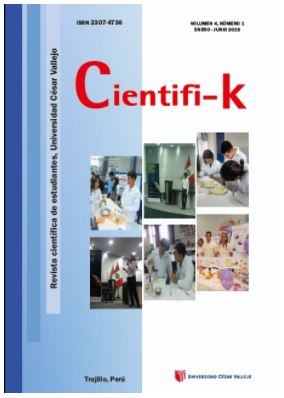Effect of coconut husk activated carbon, reinforced with pentahydrated cupric ions, in the removal of aqueous Cyanide
DOI:
https://doi.org/10.18050/Cientifi-k.v5n1a6.2017Keywords:
Cyanide, Oxidation, Concentration, Sulfate, CarbonAbstract
In the present investigation, the free cyanide oxidation process was studied by means of experimental tests. For this reason, we worked with 27 prepared solutions of sodium cyanide in volumes of one liter, with an initial concentration of free cyanide of 500 ppm, whose operating variables were amount of activated carbon from the coconut husk (25, 45 , 65 g) and amount of pentahydrated cupric sulfate (2.5, 4.5, 6.5 g) in a stirring time of 180 minutes. The results showed that increasing the amounts of activated carbon in the coconut husk and the amounts of pentahydrated cupric sulfate in their respective operation values cause the concentration of free cyanide to decrease. It was concluded, then, that the lowest free cyanide concentration level reached was 0.46 ppm, which represented 99.91% efficiency. This was achieved by having as levels of operation the amount of 65 g / L of activated carbon from the coconut husk and the amount of 6.5 g / L of pentahydrated cupric sulfate.
Downloads
Published
How to Cite
Issue
Section
License

This work is licensed under a Creative Commons Attribution-NonCommercial 4.0 International License.










